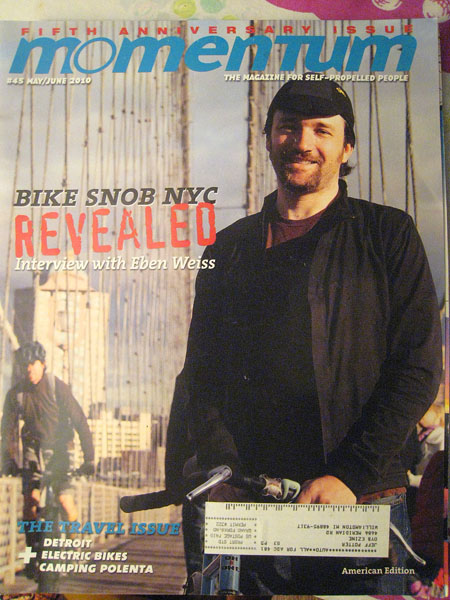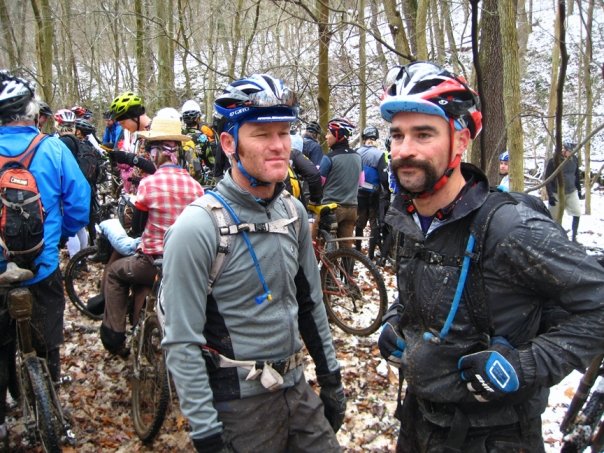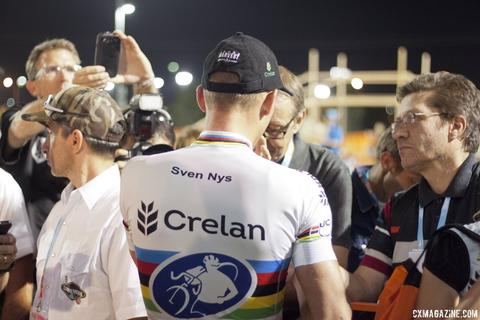I just read the following article as reposted on the Beatthetrain.org forum. (Here’s the original link. Check out the comments: 350+! carolinacyclingnews.com/2011/09/01/lost-art-of-the-group-ride/#comments)
(They’re a Detroit bike club that puts on an intense regular urban ride plus the Mad Anthony Cyclocross race at Ft. Wayne near downtown Detroit. Here’s the forum link: www.beatthetrain.org/forum/forum_posts.asp?TID=928&PN=1&FID=11&PR=3)
I probably take group riding for granted. But today’s boom in biking is nearly entirely urban. Group riding on the open roads, often at higher speeds and for longer distances, is nowadays seemingly not a young person’s activity. But maybe they’ll catch on! And if they do they will likely at first be a little intimidated. They should feel welcome and accommodated as they start their year of learning. Yeah, it takes about that long. (And they should submit to the scene. And those who already know need to help and also to firmly provide structure to ensure safety, smoothness and fun.)
Here’s the article:
LOST ART OF THE GROUP RIDE
by Peter Wilborn, Charleston, SC
Every so often, I’ll ride a recreational group ride. I love the comraderie of cyclists, the talk, the last minute pumps of air, the clicking in, and the easy drifting out as a peloton. “I miss riding in a group,” I’ll think to myself.
The magic ends by mile 10. The group will surge, gap, and separate, only to regroup at every stop sign. I’ll hear fifteen repeated screams of “HOLE!” for every minor road imperfection. And then no mention of the actual hole. Some guy in front will set a PR for his 30 second pull. Wheels overlap, brakes are tapped, and some guy in the back will go across the yellow line and speed past the peloton for no apparent reason. A breakaway?!
I curse under my breath, remembering why I always ride with only a few friends. Doesn’t anyone else realize how dangerous this ride is? How bad it is for our reputation on the road? There are clear rules of ride etiquette, safety, and common sense. Does anyone here know the rules? Who is in charge?
But no one is in charge, and the chaotic group has no idea of how to ride together. As a bike lawyer, I get the complaints from irritated drivers, concerned police, controversy-seeking journalists, and injured cyclists. It needs to get better, but the obstacles are real:
First, everyone is an expert these days. The internet and a power meter do not replace 50,000 miles of experience, but try telling that to a fit forty year-old, new to cycling, on a $5000 bike. Or, god forbid, a triathlete. No one wants to be told what to do.
Second, the more experienced riders just want to drop the others and not be bothered. It is all about the workout, the ego boost, or riding with a subset of friends. But a group ride is neither a race nor cycling Darwinism. As riders get better, they seek to distinguish themselves by riding faster on more trendy bikes; but as riders get better they need to realize two things: 1) there is always someone faster, and 2) they have obligations as leaders. Cycling is not a never ending ladder, each step aspiring upwards, casting aspersions down. It is a club, and we should want to expand and improve our membership.
Third, different rides are advertised by average speed, but speed is only one part of the equation. This approach makes speed the sole metric for judging a cyclist, and creates the false impression that a fit rider is a good one. Almost anyone can be somewhat fast on a bike, but few learn to be elegant, graceful cyclists.
Fourth, riding a bike well requires technique training. Good swimmers, for example, constantly work on form and drills; so should cyclists. Anyone remember the C.O.N.I. Manual or ‘Eddie B’ Borysewicz’s book? They are out-of-print [JP note: I keep Eddie B’s in play at my OYB eBay Store.] but their traditional approach to bike technique should not be lost. More emphasis was given on fluid pedaling and bike handling.
Before the internet, before custom bikes, and before Lance, it was done better. Learning to ride was an apprenticeship. The goal was to become a member of the peloton, not merely a guy who is sort of fast on a bike. Membership was the point, not to be the local Cat. 5 champ. You were invited to go on group ride if you showed a interest and a willingness to learn. You were uninvited if you did not. You learned the skills directly from the leader, who took an interest in riding next to you on your first rides (and not next to his friends, like better riders do today). Here is some of what you learned:
To ride for months each year in the small ring.
To take your cycling shorts off immediately after a ride.
To start with a humble bike, probably used.
To pull without surging.
To run rotating pace line drills and flick others through.
To form an echelon.
To ride through the top of a climb.
To hold your line in a corner.
To stand up smoothly and not throw your bike back.
To give the person ahead of you on a climb a little more room to stand up.
To respect the yellow line rule.
To point out significant road problems.
To brake less, especially in a pace line.
To follow the wheel in front and not overlap.
The ride leader and his lieutenants were serious about their roles, because the safety of the group depended on you, the weakest link. If you did not follow the rules, you were chastised. Harshly. If you did, you became a member of something spectacular: the Peloton.




